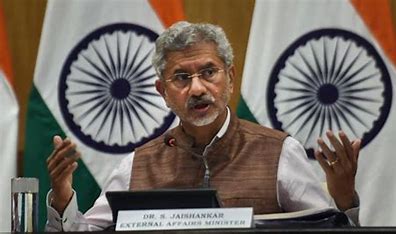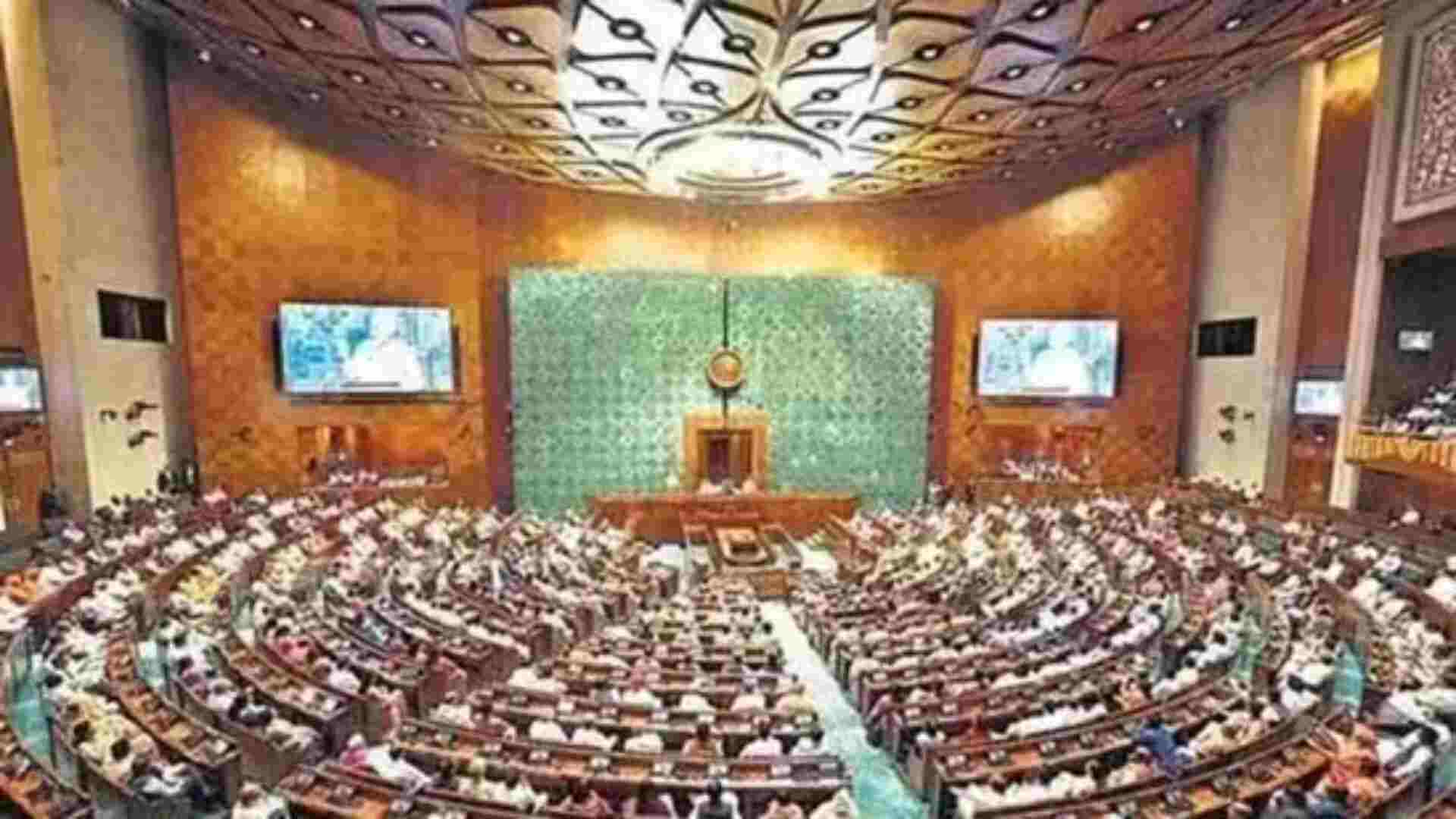
Introduction:-
On the historic date of 11th August, 2023, Union Home Minister Amit Shah took a momentous step toward rewriting India’s legal history.The Indian Penal Code (IPC), the Code of Criminal Procedure, and the Indian Evidence Act are laws that date back to the British colonial era. Minister Amit Shah signalled a significant shift towards a contemporary, citizen-centred criminal justice system by presenting three bills in the Lok Sabha to replace these laws.
The Union Minister emphasised in his speech that the proposed measures have the potential to free the country from the shackles of colonial legacy while also modernising the outdated judicial system. The Bharatiya Nyaya Sanhita (2023), Bharatiya Nagarik Suraksha Sanhita (2023), and Bharatiya Sakshya Bill (2023) represent a major step towards a more just and accommodating legal system. The Standing Committee of the Parliament will examine these legislation carefully, demonstrating a dedication to thoughtful and thorough reform.
This revolutionary endeavour took time to complete. The state began an inclusive journey by collecting the ideas of professionals from various fields after realising the necessity for well-rounded viewpoints. A Criminal Reforms Committee was established by the Central Government in March 2020 to offer recommendations for changes to the current Criminal Laws. In February 2022, the Committee turned in its final report. After lengthy discussions with numerous stakeholders, including Supreme Court and High Court Judges, Governors, Senior Advocates, etc., the Bills have been drafted.
Changes to be brought by these Proposed Bills:-
A. Eliminating Sedition Offences: The removal of sedition offences from the new bill that would replace the IPC is one of the most notable aspects of these proposed bills. This action demonstrates a dedication to defending free speech, which is a tenet of any democratic society. However, a provision (Section 150 of the Bhartiya Nyaya Sanhita Bill, 2023) has been included to sanction acts undermining the sovereignty, integrity, and unity of India.
B. Addressing Heinous Crimes: The measures call for the imposition of the most severe punishments possible, up to and including capital punishment, for a number of serious crimes like mob lynching and the rape of minors. This sends a clear message that society and the state will not tolerate actions that endanger the lives and dignity of its citizens, especially its most vulnerable groups. It also indicates an uncompromising stance against those who commit horrific crimes. A significant provision has been added addressing a serious offence involving sexual intercourse by deceitful means against women.
C. Rehabilitationover Retribution:A welcome shift towards restorative justice is the introduction of rules that allow first-time offenders to perform community service in lieu of receiving the typical sentences for minor offences. This method tries to reintegrate people into society as helpful members while also acknowledging the possibility of rehabilitation. This action is consistent with current, global views on criminal justice that place a higher priority on reformative than punishing methods.
D. Providing Justice Across Borders: The inclusion of a clause allowing for absentee trials for fugitive criminals is a calculated reaction to the problems created by criminals who frequently manage to elude the reach of the Indian judicial system. This innovation might hasten the course of justice and demonstrate that avoiding the law does not exempt one from its repercussions.
E. AddressingNational Security:The proposals also call for the creation of new offences, such as secession, armed rebellion, subversion, separatist activity, and acts harming India’s sovereignty, unity, and integrity. Protecting the country’s security and territorial integrity is a government priority, and this is in line with that.
F. Adoption of Technology: The meaning of “document” has expanded to include electronic and digital records, changing how information is presented and kept in the digital age and assuring its legitimacy and legality. Integration of video conferencing for trials represents one of the biggest advancements. Additionally, the requirement for videography during a search and seizure adds another level of transparency and guarantees that the evidence is presented to the court objectively.
G. Forensic Team Visits to the Crime site: When offences carry sentences of more than seven years, the need that forensic teams visit the crime site is a game-changer. This action increases the validity of the evidence and considerably lowers the possibility of convicting innocent people.
Indeed, this undertaking marks a shift from a legal framework that was created to serve the interests of colonial masters to one that is designed to uphold the dignity and rights of every Indian citizen.
Plausible Implications:-
A. Fostering Democratic Principles: The government’s dedication to democratic values is highlighted by the abolition of sedition offences and the focus on preserving freedom of expression. India makes a significant contribution to fostering a thriving democracy by creating an atmosphere where different viewpoints can coexist without fear of legal repercussions.
B. Accountability and Deterrence: Sending a strong message that the state is committed to maintaining the safety and security of its residents is the proposal to impose harsh penalties for grave offences These measures have the ability to discourage potential criminals and increase public confidence in the legal system by holding offenders accountable.
C. Justice and compassion: This is reflected in the provisions for community service as an alternative to traditional penalties. These reforms acknowledge the potential for transformation and human development, even in people who have committed small offences, by providing for rehabilitation and reintegration.
D. Protecting National Unity:To ensure that the constitutional ideals that support India’s unity are safeguarded, new offences relating to acts compromising the nation’s unity and integrity have been added to the proposed bills. However, to avoid abuse and safeguard people’s rights, careful interpretation and implementation would be essential.
E. Speedy Trial and Disposal of Cases:- The rapid pronouncement of judgements within 30 days, which may be extended up to 60 days, following thorough arguments from both parties, marks the culmination of this transforming journey. Within 7 days, these judgments will be immediately available online, promoting accessibility and transparency.
Potential Drawbacks:-
While the proposed criminal law reforms in India represent a bold and progressive approach to justice, it’s necessary to assess any potential negative aspects and take suggestions to allay these concerns. Here are some potential loopholes:
A. Misuse of Broadly Defined Offences: Though necessary for national security, the introduction of new offences such acts damaging national unity and integrity could be abused to suppress genuine dissent or target political opponents. The broad definitions of these offences could result in a situation where people are charged with crimes just for expressing political ideas. In order to combat this, the definitions of these crimes should be precisely defined and ensure that they are only applied in situations where there is a real threat to national security.
B. Capital Punishment for Heinous Crimes: It is also important to take the death penalty’s ethical ramifications into account. The potential for erroneous convictions and the irreversibility of the death penalty call for prudence. The judicial system might emphasise thorough rehabilitation programmes for significant offenders, addressing the underlying causes of their acts, rather than concentrating only on punishment.
C. Absence of Accused in Trials: While allowing absconding offenders to have their cases tried in absentia is a practical move, it raises questions regarding the accused’s right to a fair trial and due process. The fairness of the trial can be undermined without the accused presence. In order to remedy this, the judicial system should make sure that the rights of the accused are maintained by having legal representation and the ability to appeal even when they are not present.
D. Community Service for Minor Offenses: While the addition of community service as an alternative to traditional punishment is a progressive step, it may cause some people to question the consistency and fairness of sentencing. To prevent scenarios in which offenders experience unequal treatment based on elements like social rank or connections, the implementation of community service should be closely supervised. The nature and duration of community work should also be well defined, ensuring its efficacy as a rehabilitative intervention.
E. Potential for Disproportionate Punishment: While enforcing harsh penalties for certain crimes may serve to prevent criminal activity, it also runs the risk of punishing people unfairly, especially those who are marginalised or economically disadvantaged. To avoid this, the legal system should think about adopting rules that would allow judges to evaluate elements including the seriousness of the offence, the offender’s intent, and their background before deciding on the proper punishment.
F. Transitional Clarity Issues: The legal system may become perplexed and ambiguous when fresh reforms replace colonial-era laws. It takes extensive communication and training for legal experts, law enforcement organisations, and the general public to ensure a smooth transition. To aid with comprehension and adaption, workshops, public awareness campaigns, and easily accessible resources could be used.
Conclusion:-
The process must be persistently centred on the values of transparency, inclusivity, and debate as these laws go through the parliamentary panel’s review and modifications. There is tremendous potential for this pivotal moment to lead the way for a contemporary, adaptable, and citizen-centered criminal justice system. The changes mark a turning point in the nation’s continual pursuit for advancement as well as in legal history. The possible drawbacks must be carefully considered at every step of this transformative journey in order to ensure that the pursuit of advancement is thoughtful and comprehensive endeavour.
The story of liberation from colonial restraints and acceptance of a new legal paradigm ultimately serves as a tribute to a nation’s resiliency, flexibility, and foresight. It reflects the steadfast nature of democracy, the dedication to justice, and the will to create a future that remains firm in the present while maintaining a constant eye on the horizon of development. These proposed bills symbolise the possibility of a judicial system that actually serves the people it seeks to defend and empower as India progresses. They serve as a light of hope and promise.















